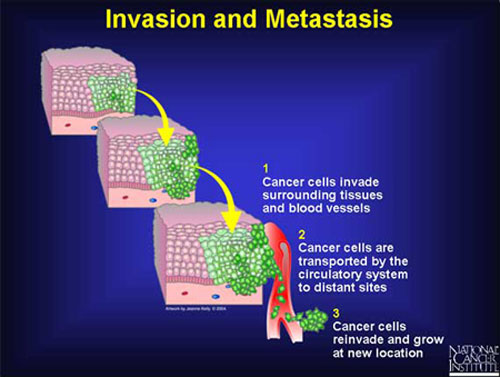A blood test for early detection of breast cancer metastasis
The chances of being cured of breast cancer have increased in recent decades, however if the tumour has metastasised, the disease remains essentially incurable. One reason for this could be that the metastases are detected late, after they have grown enough to cause symptoms or be seen on a radiological scan. If they could be found sooner, it might be possible to treat the new tumours. Research findings from Lund University in Sweden now provide new hope for a way of detecting metastases significantly earlier than is currently possible.
The discovery was made by a research team led by Lao Saal, M.D. Ph.D, and is based on what is known as cell-free circulating DNA - small fragments of genetic material from different cells which circulate in the blood. It is normal to have low amounts of such DNA material in the blood, but in the case of diseases such as cancer, these amounts can increase. Furthermore, in cancer patients, the circulating DNA contains the genetic mutations which are specific to the tumor.
Lao Saal and his colleagues used previously gathered material from a breast cancer study which has been underway in Lund since 2002. The material contained samples from surgically removed tumours from patients with non-metastatic disease as well as blood samples taken from the patients at regular intervals during the years in which they were followed up.
The tumour samples contained many genetic changes, which constituted a “fingerprint” specific to each tumour. Researchers then looked in the blood samples for circulating tumour DNA (ctDNA) with the same fingerprint. Although the study is fairly small - it is based on material from only 20 women - the results are striking.
“For 19 of the 20 women, the ctDNA in the blood samples gave a clear indication of how things would turn out. The women who never got a relapse had no detectable ctDNA, whereas all women who had tumour DNA in their blood eventually had symptomatic relapses that were diagnosed in the clinic”, said Lao Saal.
 The metastases were also reflected in the blood samples at an early stage. There it was possible to find signs of the new tumours many months before hospital investigations revealed that the patients had suffered a relapse.
The metastases were also reflected in the blood samples at an early stage. There it was possible to find signs of the new tumours many months before hospital investigations revealed that the patients had suffered a relapse.
“The circulating tumour DNA values in the blood samples identified the metastases on average 11 months before they were diagnosed by standard clinical procedures. In some cases, the blood test detected the metastasis three years earlier. If we could find the cancer recurrences that much earlier, we might be able to treat them more successfully”, said Lao Saal.
The study must be followed by investigations with more participants, so that researchers can be sure that the results are sustainable. If they are, ctDNA testing could become a way of detecting breast cancer metastasis much earlier than is currently possible.
In addition to the possibility of treating the women who are about to get metastases, the a potential future use of the new method could be to determine which women do not need to be treated so aggressively. If we know that women with no ctDNA in their blood are not going to get a relapse, less aggressive treatment could be sufficient in their case. Currently, most breast cancer patients are treated not only with surgery, but also radiation, hormone therapy or chemotherapy.
“It is believed that many women with breast cancer are being overtreated, which entails considerable side effects and costs. But as long as we do not know for certain which women will survive without additional treatment, physicians are hesitant to skip the additional therapies. The monitoring of ctDNA could help address that question”, says Lao Saal.
If supported by further studies, he believes that the monitoring should be carried out at regular intervals after the breast cancer surgery. The quantity of ctDNA, as well as the emergence of specific gene mutations, could be used in the future to steer therapy in a more precise manner. The Lund researchers have already started new studies in which a larger number of women will be monitored from breast cancer diagnosis and onwards, as well as testing ctDNA methods in other cancer types.
###
Lao Saal, M.D., Ph.D.
lao.saal@med.lu.se
46-708-885-261
Lund University
Journal
EMBO Molecular Medicine